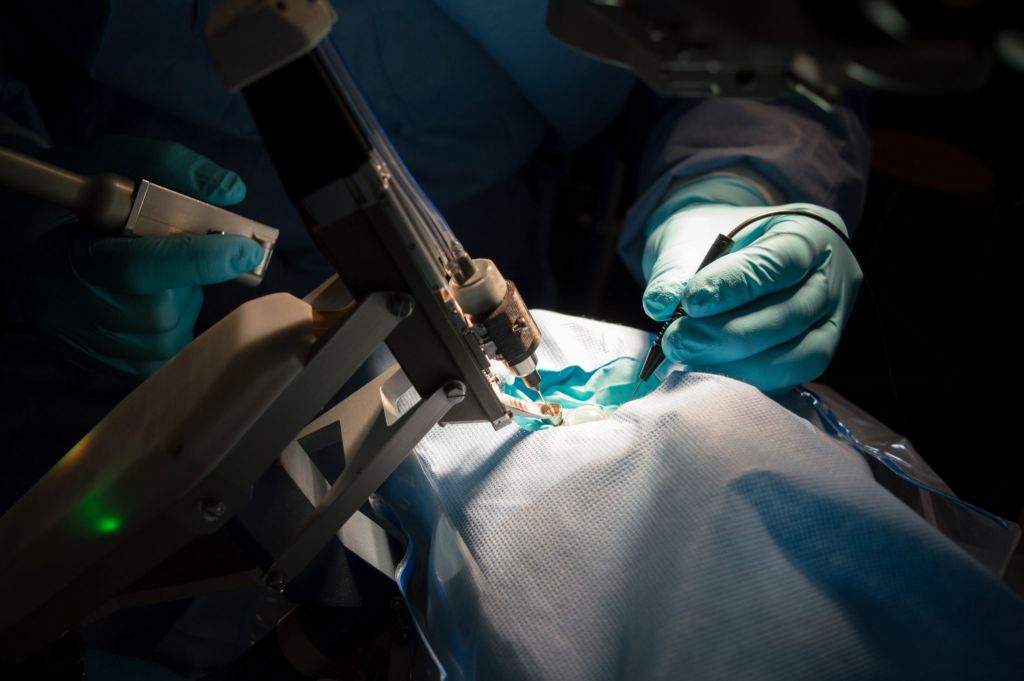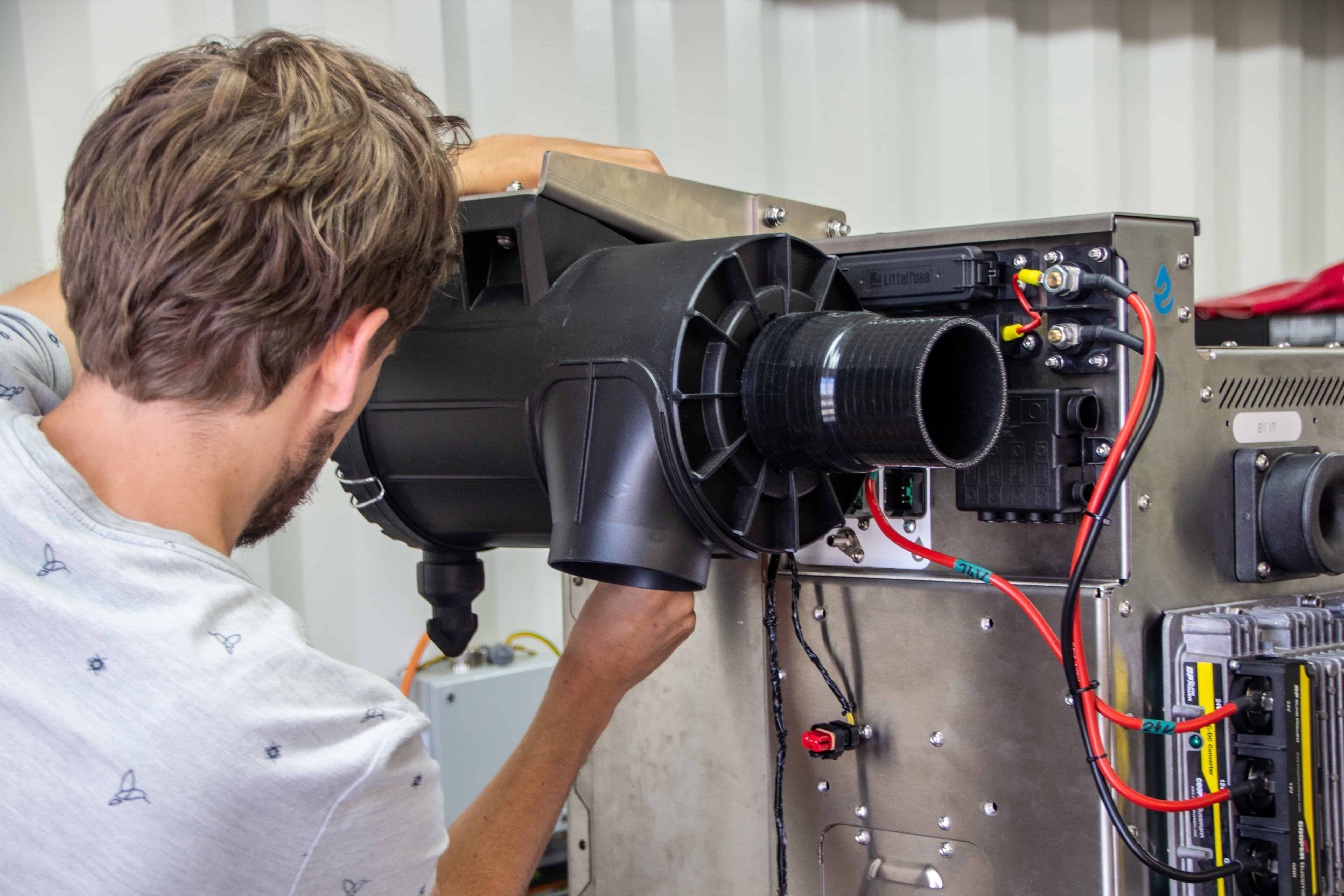
Surgeons at Oxford’s John Radcliffe Hospital used Preceyes’ robot for prolonged delivery of a drug in the eye, a world’s first using robotic assistance.
Robert MacLaren, Professor of Ophthalmology, used the PRECEYES Surgical System to treat a subretinal haemorrhage with a subretinal tPA injection. The procedure was successfully carried out under local anesthesia. Preceyes’ robot allowed an accurate and steady instrument position within the subretinal space whilst administering the blood dissolving agent tPA. This is the first patient to undergo this procedure with robotic assistance and it is the first robot-assisted eye surgery ever to be performed under local anesthesia.
Preceyes and the team at the University of Oxford’s Nuffield Laboratory of Ophthalmology have worked together to enable this clinical trial. In the first part of the trial, 12 macular peeling procedures have been carried out successfully, of which 6 using Preceyes’ robotic assistance. Subretinal tPA injection is the next step in the trial. The trial targets to assess the robotic system to facilitate ocular gene therapy delivery. The trial is funded by the NIHR Oxford Biomedical Research Centre with support from Oxford University Hospitals NHS Foundation Trust, which runs the hospital, and sponsored by the University of Oxford.
Robert MacLaren: “We have successfully entered the next phase of the robotic retinal dissection device (R2D2) clinical trial and used the robot to inject a drug slowly under the retina in a patient who suffered a retinal bleed. The operation was performed successfully under local anaesthetic without any complications. It is still early days, but we hope this milestone brings us closer to our eventual goal of using robotic surgery to deliver gene therapy and stem cell treatments for currently incurable retinal diseases.”
Prof. Marc de Smet, MD, Chief Medical Officer of Preceyes: “This new milestone is an important next step in a process of breakthrough innovation for Preceyes. We have previously shown in live animals that targeted drug delivery to the sub-retinal space as well as successful cannulation of small retinal vessels are possible using the Preceyes platform. The current surgery confirms both precision and stability of our platform for a prolonged deliberate injection under local anesthesia in humans. This demonstrates that our technology enables to perform these high-precision drug delivery treatments in the eye.”








